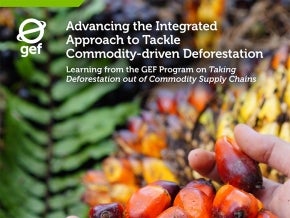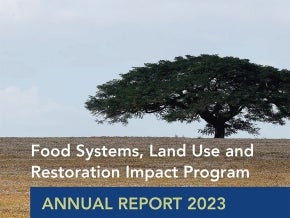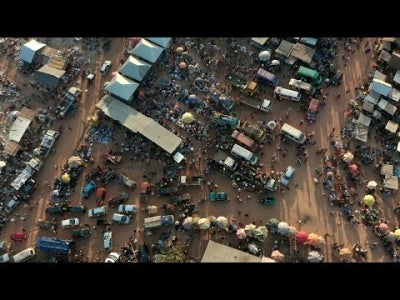Living in Harmony: Community conservation in the Altai Sayan Ecoregion of Russia, Mongolia and Kazakhstan

“I have lived here in these mountains for my whole life. Like my father, and his father before him, I am a herdsman and I graze my animals here in the Toolaylyg and Barlyk River valleys… Herding is the only lifestyle we know. Our animals provide us with our food, clothes, yurts, and fuel for cold winter nights. They are also our main source of income – without livestock, it would be impossible to survive here. So, when our flocks and herds are doing well, we are happy and confident. But when we lose many animals it is a tragedy for our families.” Sergey Tumey-Ool Bady-Ochur
The Altai Sayan Ecoregion is critically important for global biodiversity conservation. This mountainous landscape spans the territories of Russia, Mongolia, Kazakhstan, and China. It includes forests, steppes, deserts, and semi-deserts, and serves as an important watershed, a global centre of plant diversity, and habitat for endangered animals such as the snow leopard and giant argali sheep. It is also home to diverse ethnic groups who are herders, hunters, and equestrians, who practice largely traditional land uses.
But in the last 25 years, the emergence of the market economy has led to increasing pressure on natural resources in this ecoregion. Wildlife numbers declined as a result of over-hunting and over-fishing, loss of habitat, and conflict between people and predators; and, overgrazing resulted in extensive land degradation. These trends have been exacerbated by the effects of extreme weather events, fires, and new pressures brought by mining and the resulting pollution of rivers.
Still, in many parts of the Altai Sayan Mountains, herders live a traditional nomadic lifestyle. The life of a herder is difficult and sometimes dangerous work. All day, in any weather – hot sun, rain, heavy snow, wind – a herder watches his flock, following them up the steep, rocky slopes, keeping them together while they graze in the pastures, and protecting them from livestock thieves and predators. At night the animals are kept in corrals, but even then, herders need to be alert as predators can come under the cover of dark, killing many animals at once.
“One winter’s night in January 2016, a snow leopard came to my corral and murdered 65 sheep and goats – I began to understand why some herders hate snow leopards. Our conflict grew – snow leopards killed livestock in our corrals, so we killed snow leopards in retaliation. But it was a war that only benefitted the wolves: they came back to the area… and we lost even more of our livestock.”
The main predators in these mountains are wolves and snow leopards. Wolves hunt in packs out in the fields and can kill many animals in a single attack. Snow leopards are solitary animals and out in the pastures usually only kill one or two sheep at a time. But, if they get into the night corrals, they can kill many animals at once, with devastating impacts for herder families. As the numbers of argali sheep (the preferred prey of snow leopards) declined in the high Altai Sayan, snow leopards preyed more heavily on domestic livestock, and, although herders were well-aware that snow leopards help to deter wolves, increased stock losses led to persecution of snow leopards…and a resulting increase in attacks by wolves.

In an effort to establish a symbiotic equilibrium, the UNDP-supported, Global Environment Facility (GEF)-financed project "Biodiversity Conservation in the Russian Portion of the Altai Sayan Ecoregion" worked with local communities to apply community-based management and conservation strategies which empowered herder communities to resolve wildlife-human conflicts and other land and resource-use problems.
By acknowledging humans as an integral part of even the most remote ecosystems, and creating incentives for communities to protect their environment, this project has made a significant contribution to ensuring the mutual survival of keystone species and nearby communities in the Altai Sayan mountains.
After Sergey lost his livestock to snow leopards, the project supplied metal mesh and tools and worked
“to build a strong protective cover for the corral – not only mine, but in 25 other herder camps in this area. This was such a simple thing, but it saved our livestock, it saved our families from poverty and it saved snow leopards. It worked so well that the next year, protection was given to corrals in other parts of these mountains. And that ended the war between snow leopards and herders – we no longer had to fear winter nights. Almost ten years have passed, but our corrals are still leopard-proof!”
This project is one integral component of a tri-national initiative comprising three complementary UNDP-supported, GEF-financed projects in Russia, Mongolia and Kazakhstan, implemented between 2006 and 2011.
Collectively, these projects have taken a trans-boundary, landscape approach to conserve biodiversity through improved coverage, management, and connectivity of protected areas; empowering local herder communities to take custodianship of the landscapes in which they live; building partnerships among local herder communities, government, and civil society organisations to resolve forest and grassland management problems; and stimulating diversification of livelihoods to address poverty and build sustainable communities.
With the support of organisations including the UNDP, GEF and WWF (among others), the governments of all three countries continue to invest in this work, through ongoing projects and new initiatives, such as the conservation of wetlands in China’s Altai Mountains and an Adaptation Fund financed project promoting ecosystem-based adaptation in Mongolia.
“Snow leopards still live around my mountain camp – I hear them moving about at night, and some winter mornings I see their pawprints in the snow around the corral and even on its roof. But, they cannot get in. …snow leopards save many more of our livestock by keeping wolves away. They are no longer my enemy, but my protector.”
This story was originally published by UNDP.


